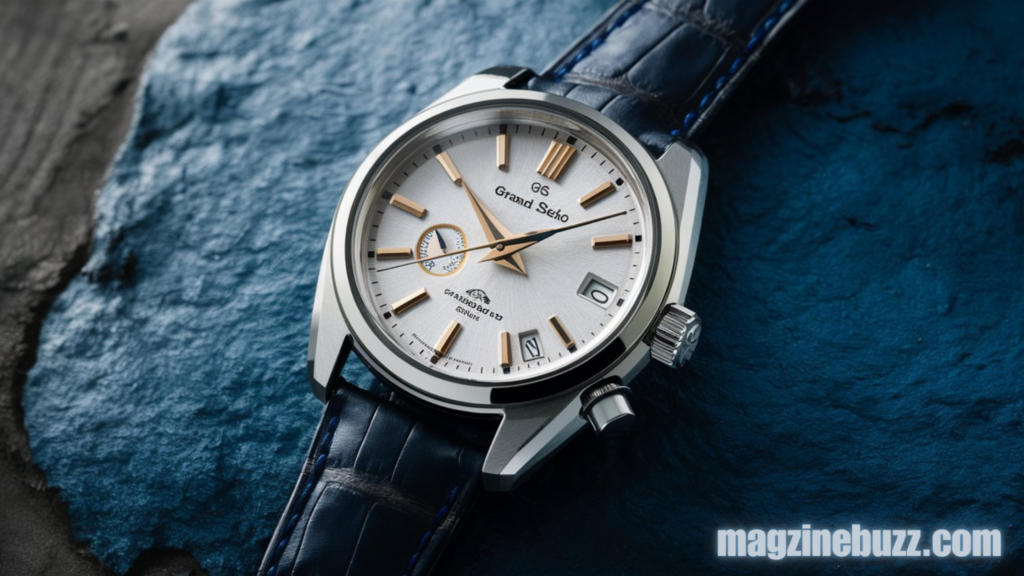Introduction
Lewy Body Dementia (LBD) is a complex and progressive neurodegenerative disorder that affects millions worldwide. It’s by far the second one most common form of dementia after Alzheimer’s disorder, characterized using the presence of peculiar protein deposits known as Lewy bodies in the mind. These proteins disrupt the normal functioning of brain cells, leading to cognitive decline, motor issues, and behavioral changes. Understanding the 7 stages of Lewy Body Dementia can provide a roadmap for caregivers, medical professionals, and families navigating this challenging journey.
Overview of Lewy Body Dementia and Its Unique Challenges
Lewy Body Dementia is often misdiagnosed because its symptoms can overlap with other forms of dementia, Parkinson’s disease, or psychiatric disorders. Early and accurate diagnosis is crucial for better management and care. The hallmark symptoms include fluctuations in cognition, visual hallucinations, REM sleep behavior disorder, and Parkinsonism, such as tremors and muscle rigidity.
The Importance of Understanding the Stages
Recognizing the 7 stages of Lewy Body Dementia helps in anticipating the course of the disease and planning for each phase. Although individual experiences vary, understanding the stages can help families prepare emotionally and practically for the challenges ahead.

Stage 1: No Noticeable Symptoms
The first stage is the pre-symptomatic phase, where no outward symptoms are evident. During this time, Lewy bodies may already be forming in the brain, but the person continues to function normally. This phase may last for years without apparent cognitive or motor impairment.
Stage 2: Very Mild Cognitive Impairment
In this stage, subtle changes in cognition start to emerge. A person may experience mild forgetfulness, slight trouble concentrating, or occasional memory lapses. However, these changes are often attributed to normal aging, making it difficult to recognize the early onset of Lewy Body Dementia.
Stage 3: Mild Cognitive Decline
The third stage brings more noticeable symptoms. Short-term memory loss becomes more apparent, and the person might struggle with multitasking or managing complex activities like finances. Visual and spatial problems may also arise, leading to difficulty judging distances or navigating familiar places. These challenges often align with what’s anticipated in the 7 degrees of Lewy frame Dementia.
Stage 4: Early-Stage Lewy Body Dementia
In this stage, the symptoms begin to interfere with daily life. The person may experience confusion, disorganized thinking, and increased forgetfulness. Cognitive fluctuations become more pronounced, with periods of near-normal functioning alternating with significant cognitive lapses. Behavioral changes, such as anxiety, depression, or apathy, may also start to manifest. These developments mark an important phase in the 7 stages of Lewy Body Dementia.
Stage 5: Moderate Lewy Body Dementia
As the disease progresses, the symptoms intensify. Stage 5 marks slight cognitive decline, with the character requiring help with day-by-day sports like dressing, grooming, or meal preparation. Memory troubles, hallucinations, and delusions emerge as extra chronic. Mobility is also affected, with the development of motor symptoms similar to Parkinson’s disease, such as muscle stiffness, shuffling gait, and tremors. Understanding how these factors evolve during the 7 stages of Lewy Body Dementia is vital for caregivers.
Stage 6: Severe Cognitive Decline
Stage 6 brings severe cognitive and physical impairments. The person may no longer recognize familiar faces, have difficulty communicating, and exhibit extreme confusion and disorientation. Hallucinations and delusions become more frequent and distressing. The individual typically needs full-time care and assistance with basic functions like eating, bathing, and toileting. At this stage, the severity of symptoms becomes clearer as the 7 stages of Lewy Body Dementia reach their most challenging points.
Stage 7: Late-Stage Lewy Body Dementia
In the final stage, the person is fully dependent on caregivers for all activities of daily living. Speech is often lost, and the ability to walk or even sit unaided declines significantly. The risk of infections, such as pneumonia, increases due to immobility. End-of-life care focuses on comfort and quality of life, with a soothing approach often being the best option.
Symptoms Beyond Cognition: The Hallucinations and Delusions of LBD
One of the distinguishing features of Lewy Body Dementia is the presence of visual hallucinations and delusions. These often occur in the earlier stages and become more frequent and intense as the disease progresses. Patients may see shapes, shadows, or even fully formed figures that aren’t there. Delusions, such as believing someone is out to harm them, are also common in the 7 stages of Lewy Body Dementia.
Cognitive Fluctuations: The Roller Coaster of LBD
Not like other dementias, Lewy body Dementia is characterized using unpredictable cognitive fluctuations. Someone with LBD would possibly have moments of readability and alertness, followed with the aid of durations of excessive confusion and disorientation. These fluctuations can occur over hours, days, or even weeks, adding to the complexity of caregiving throughout the 7 stages of Lewy Body Dementia.

REM Sleep Behavior Disorder: An Early Red Flag
REM sleep behavior disorder (RBD) is often one of the earliest signs of LBD, sometimes appearing years before cognitive symptoms. It involves acting out dreams, now and again violently, due to the lack of the normal paralysis that happens all through REM sleep. Recognizing RBD early on can help with an earlier diagnosis of Lewy Body Dementia and provide insight into how the 7 stages of Lewy Body Dementia might unfold.
The Overlap with Alzheimer’s and Parkinson’s Diseases
Lewy Body Dementia shares symptoms with both Alzheimer’s and Parkinson’s, leading to frequent misdiagnosis. While Alzheimer’s primarily affects memory, LBD impacts cognition, attention, and visual-spatial abilities more severely in its early stages. Similarly, while Parkinson’s focuses on motor issues, LBD includes cognitive decline alongside motor symptoms. This overlap can make it difficult to differentiate the conditions during the first few of the 7 stages of Lewy Body Dementia.
Diagnostic Challenges in Early Stages
Diagnosing Lewy Body Dementia in its early stages is challenging due to its symptom overlap with other conditions. There is no single test for LBD; instead, doctors rely on clinical evaluation, neuroimaging, and careful observation of symptom patterns over time. Early and accurate diagnosis can significantly improve quality of life by guiding appropriate treatment and care strategies, especially when considering the nuances of the 7 stages of Lewy Body Dementia.
Caregiving Strategies in the Early Stages
In the early stages of Lewy Body Dementia, maintaining routine, offering cognitive stimulation, and providing emotional support are crucial. Educating the family about the condition and connecting with support groups can be beneficial. Early planning for legal, financial, and care preferences is also recommended during this time.
Managing Cognitive Fluctuations and Hallucinations
As cognitive fluctuations and hallucinations become more prevalent, caregivers may need to adapt their strategies. Reducing environmental stress, offering reassurance during confusing episodes, and avoiding confrontation are key approaches. Medications may be prescribed to manage severe hallucinations, though these should be used cautiously due to potential side effects. These strategies become increasingly important as the 7 stages of Lewy Body Dementia progress.
Addressing Behavioral Changes and Psychiatric Symptoms
Behavioral changes such as anxiety, depression, and apathy are common in Lewy Body Dementia. Addressing these symptoms requires a combination of pharmacological and non-pharmacological approaches. Structured activities, regular physical exercise, and maintaining social connections can help mitigate some of these challenges.
Physical and Occupational Therapy in the Mid-Stages
As motor symptoms become more prominent in the mid-stages, physical and occupational therapy can play a vital role. Exercises focusing on balance, strength, and flexibility can improve mobility and reduce the risk of falls. Occupational therapy can help with adaptations for daily activities, ensuring a safer living environment. The involvement of these therapies is crucial throughout the 7 stages of Lewy Body Dementia.
Speech and Swallowing Issues
In the later stages of Lewy Body Dementia, speech and swallowing difficulties often arise. Speech therapy can assist in maintaining communication skills for as long as possible, while diet modifications and techniques like swallowing exercises can help prevent choking and aspiration.
The Role of Palliative Care in Lewy Body Dementia
As Lewy Body Dementia progresses to its final stages, palliative care becomes increasingly important. The focus shifts to maximizing comfort, managing symptoms, and providing emotional and spiritual support. Palliative care can be introduced at any stage to enhance the quality of life and provide relief from distressing symptoms, particularly as the 7 stages of Lewy Body Dementia advance.
End-of-Life Considerations
End-of-life care for someone with Lewy Body Dementia involves making decisions about feeding tubes, resuscitation, and the use of medications. Families should discuss these matters early in the disease process to respect the patient’s wishes. Hospice care is often an appropriate choice in the later stages, offering compassionate care for both the patient and their family.
Emotional and Psychological Impact on Caregivers
Caring for someone with Lewy Body Dementia is emotionally and physically demanding. The unpredictable nature of the disease, coupled with the emotional toll of witnessing cognitive decline, can lead to caregiver burnout. Support groups, respite care, and therapy are vital resources for caregivers to maintain their well-being throughout the 7 stages of Lewy Body Dementia.

Financial and Legal Planning
Financial and legal planning should be initiated as early as possible after a diagnosis of Lewy Body Dementia. Establishing power of attorney, creating an advance directive, and reviewing financial resources can prevent future complications and ensure that the patient’s wishes are honored.
The Importance of a Multidisciplinary Care Approach
Managing Lewy Body Dementia requires a multidisciplinary team, including neurologists, psychiatrists, occupational therapists, and social workers. Collaborative care ensures that all aspects of the disease—cognitive, motor, behavioral, and emotional—are addressed comprehensively, especially as the 7 stages of Lewy Body Dementia progress.
Technological Aids in Managing Lewy Body Dementia
Technology can be a valuable tool in managing Lewy Body Dementia. Wearable devices for tracking movements, apps for cognitive exercises, and smart home systems can enhance safety and support both the patient and caregiver.
Social Connections and Cognitive Engagement
Maintaining social connections and cognitive engagement can slow cognitive decline and improve quality of life. Activities like puzzles, art, music therapy, and spending time with loved ones provide mental stimulation and foster a sense of belonging and purpose.
Family Support and Communication
Open communication within the family about the progression of the disease and each person’s role in caregiving is essential. Family counseling and involvement in decision-making can strengthen relationships and ensure everyone is on the same page regarding care strategies.
Looking Ahead: Hope in Research and Treatment
Research into Lewy Body Dementia is ongoing, with efforts to develop better diagnostic tools, treatments, and ultimately, a cure. Current treatments focus on managing symptoms rather than halting disease progression. However, advances in understanding the underlying pathology of LBD provide hope for more effective interventions in the future, which could alter the course of the 7 stages of Lewy Body Dementia.
Conclusion
Understanding the 7 stages of Lewy Body Dementia offers insight into the progression of this complex disease. Each stage brings unique challenges, requiring tailored approaches to care and management. While the journey is difficult, a combination of medical care, emotional support, and early planning can significantly improve the quality of life for both the patient and their caregivers. By remaining informed and proactive, families can navigate this journey with compassion, resilience, and hope.




